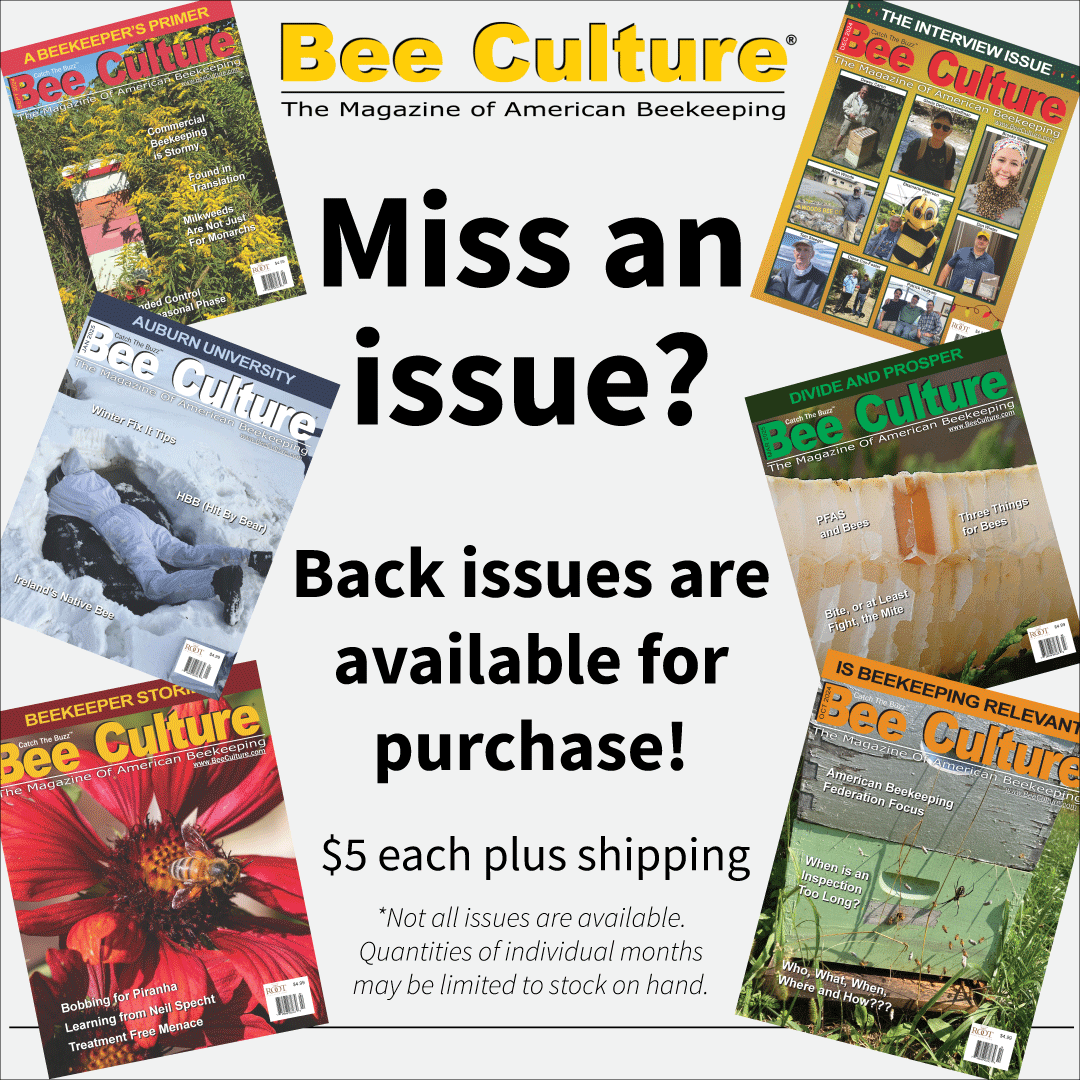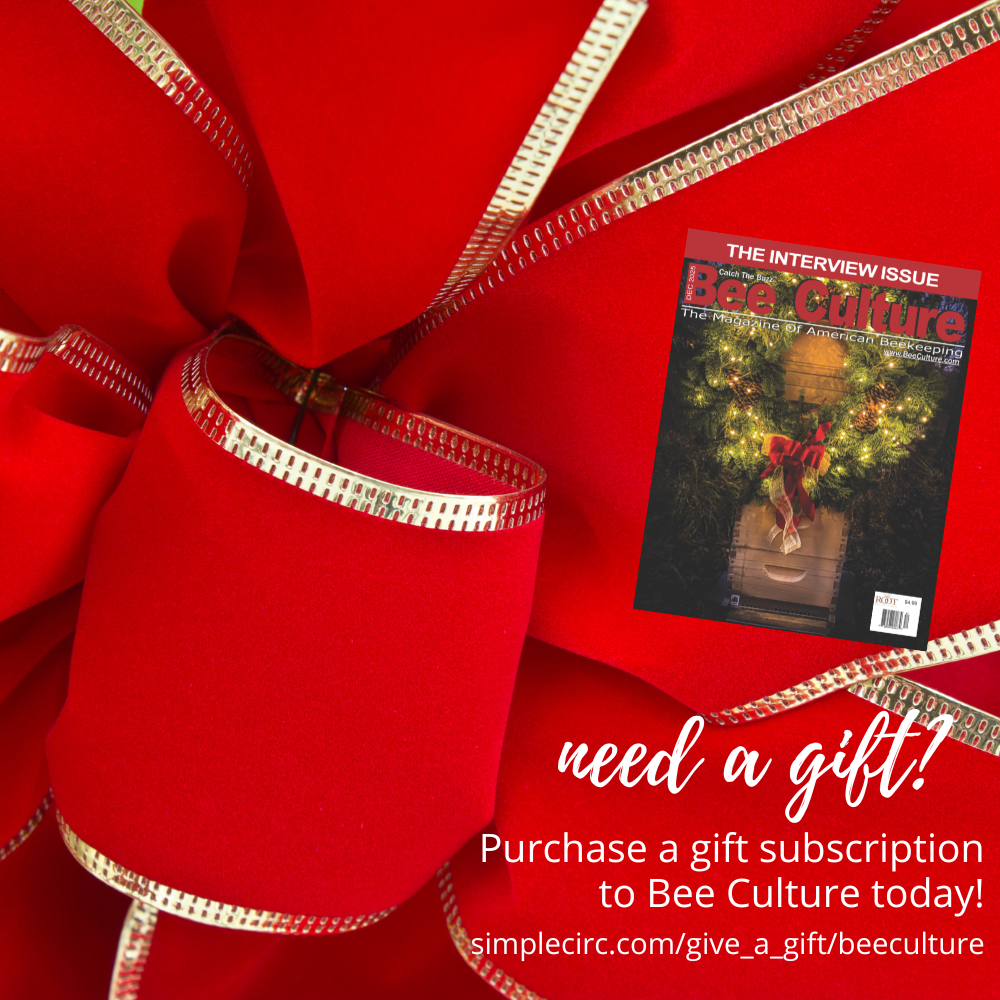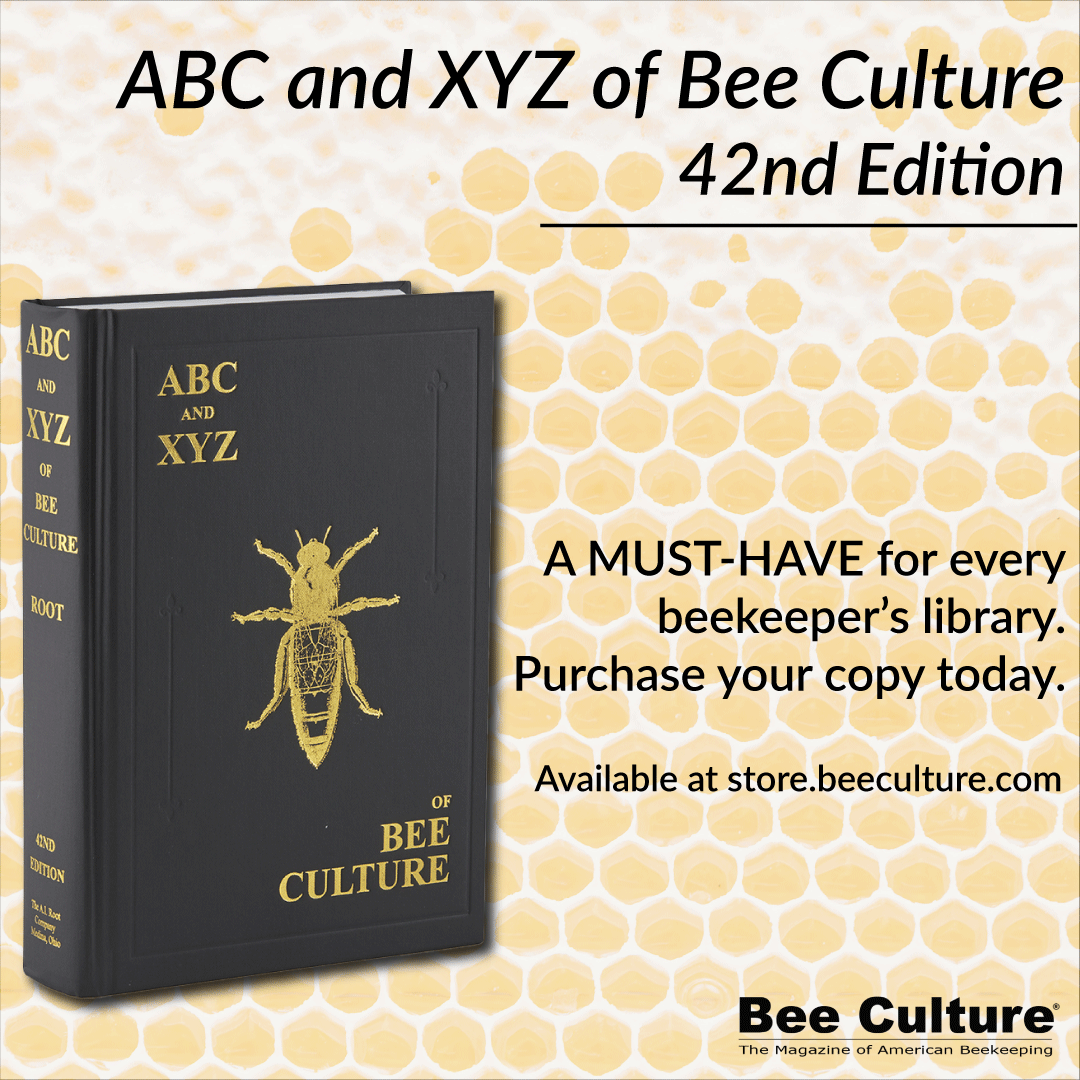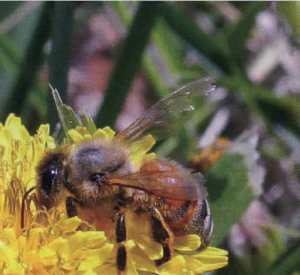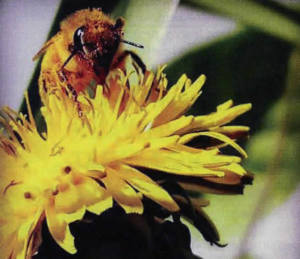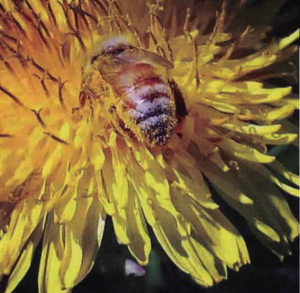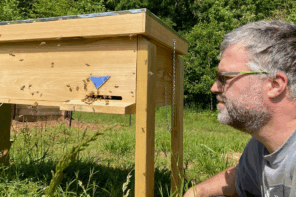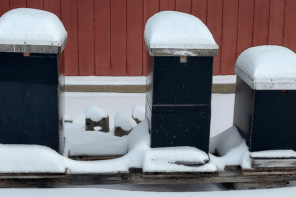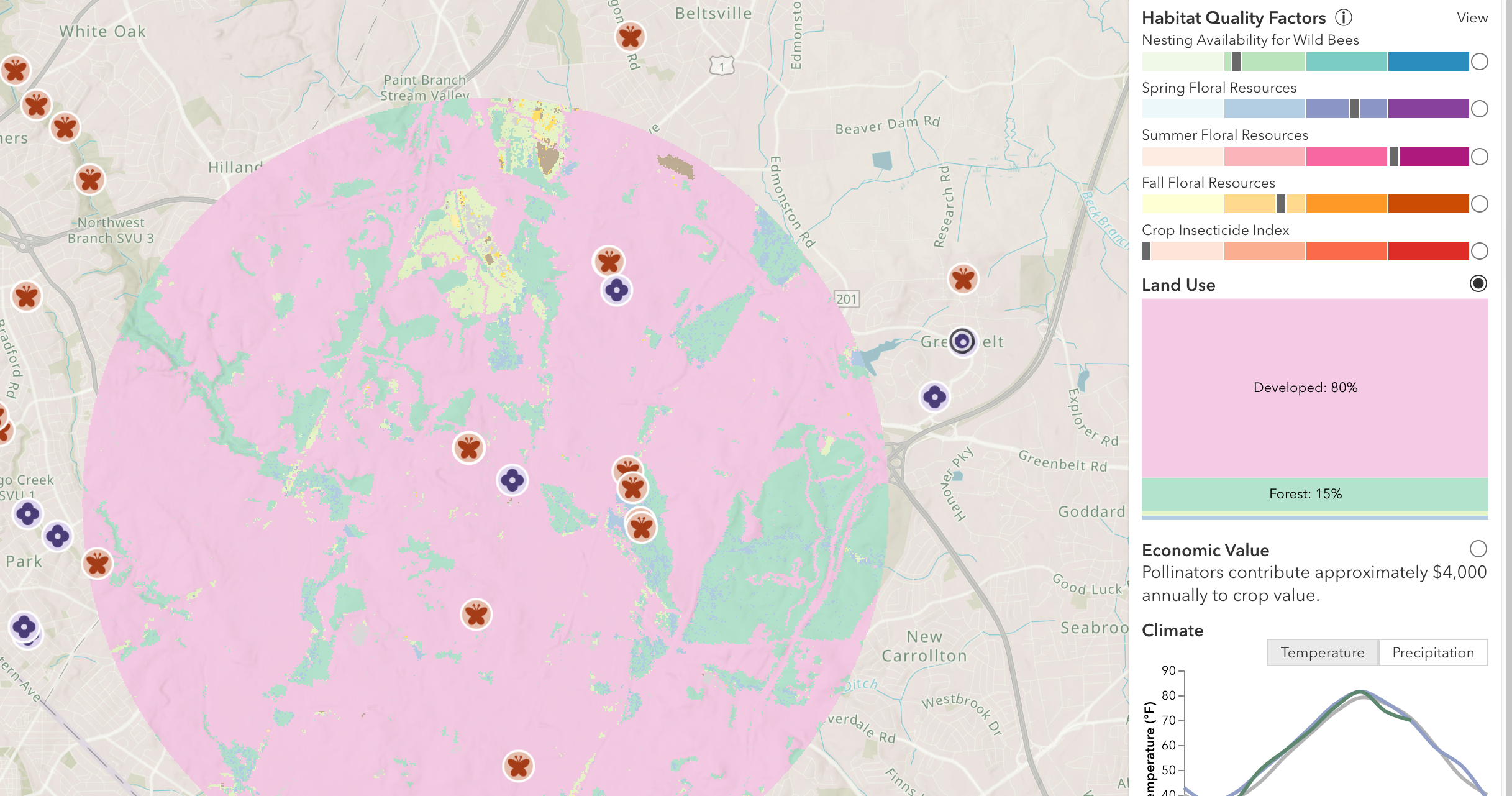By: Connie Krochmal
Beekeepers greet the early Spring dandelion blossoms with much delight. These are often so numerous that the flowers appear as a carpet of gold. The Latin name for the genus, Taraxacum, comes from the Arabic for ‘bitter herb.’ These plants occur in a wide range of habitats. Worldwide, there are around 25 species.
Due to the long taproot extending several feet, these tenacious plants are very difficult to remove. However, those seeking to have immaculate lawns never cease to give up the battle. Dandelion refuses to be suppressed. It has been referred to as “the tramp with a golden crown.”
This plant spreads very easily by seed that can blow for miles in the wind and by new shoots arising from the root.
Habitat and Distribution
The common dandelion (Taraxacum officinale) occurs from 6500 feet to sea level. Partial to rich soils, it inhabits a range of habitats, including pastures, damp and dry sand, cultivated and undisturbed ground, waysides, open woods, grasslands, meadows, fields, waste places, and especially lawns. Winter hardy to zone three, the dandelions are generally native to the northern hemisphere.
This can be found pretty much over the entire country, including Hawaii and Alaska.
Description of the Common Dandelion
Typically a perennial, it sometimes behaves as a biennial. The stem is largely underground out of sight. The most visible part is the basal rosette of foliage.
The leaves are quite variable in shape and size. Up to 10 inches in length, they can be entire, lobed, toothed, notched, or very finely cut.
Much of the flower stem develops underground where it is sheltered from cold and inclement weather. The solitary, orange-yellow to gold, daisy-like flower heads follow the sun. They can vary in size from 1 ½ to two inches in diameter. These composites have rays resembling petals, which are in fact, individual flowers. The underside of the outer rays is purplish.
Below the flower heads are two rows of bracts, some of which bend downwards. The hollow leafless flower stem is about 1 ½ feet in height.
The globe-like seed head is packed with fluffy seeds. These often freely drift like parachutes on the breezes. Children delight in blowing on these fuzzy heads.
Red-Seeded Dandelion
Also called rock dandelion and lesser dandelion, the red-seeded dandelion (Taraxacum erythrospermum or T. laevigatum), a cultivated species, is a special case.
This was one of the four dandelion types that the Massachusetts Horticultural Society displayed at its exhibit in 1871. The others were French large leaved, French thick leaved, and American Improved. When grown in a dry soil, red-seeded dandelion leaves will be more finely cut than usual.
Once considered an introduction from Europe, it was later classified as a native species in the U.S. This is found in almost all states, including Alaska and Hawaii. It is absent from New Mexico and the lower half of Louisiana. Red-seeded dandelion occurs on thin dry soils and in waste places, meadows, fields, pastures, and lawns. This is most commonly found along roadsides and railroad tracks.
An easy way to distinguish red-seeded dandelion from the common dandelion is to look at the seeds. These are purplish-red or red, while those of the ordinary dandelion will be green, brown, or olive.
A repeat bloomer, it first begins flowering from March to July. However, it continues for much of the year. Less than six inches tall, red-seeded dandelion is quite tolerant of inclement weather. The deeply dissected leaves are two inches wide.
Other Species of Dandelions in America
There are perhaps ten species in the U.S. with some of those being cultivated. Several are considered to be natives. These largely resemble the common dandelion other than some minor difference in the height or size of the leaves or blossoms.
The range of the California dandelion (Taraxacum californicum) is restricted to California where it is classified as endangered.
The woolbearing dandelion (Taraxacum officinale ssp. ceratophorum) was once considered a species by some. It is now classified as a subspecies of the common dandelion. This is found in much of the western half of the country, particularly the Rocky Mountains. It doesn’t occur in Arizona and rare in California.
Others that are native to America include the northern dandelion (Taraxacum phymatocarpum or T. alaskanum). This occurs only in Alaska, parts of Canada, and Greenland. Another species, the fleshy dandelion (Taraxacum cameocoloratum), is also found in Alaska as well as in the Yukon, It blooms June to August. Less than six inches tall, it has leaves that are 3 ¼ inches in length. This occurs on calcareous ledges and meadows.
Common Names for Dandelions
The list of common names for this cosmopolitan weed is vast. In fact, one English flora has almost an entire page of preferred names. The name dandelion is based on medieval Latin meaning “tooth of the lion.” No one seems to have a good explanation accounting for this peculiar name. Some of the other popular common names include doon-head, Irish daisy, puffballs, fairy clock, clock flower, and cankerwort.
Growing and Using Dandelions
Dandelions are made into wine and beer. These have been grown as a vegetable for over a hundred years, especially the larger leaved ones. They can be propagated by seed and root cuttings.
All parts of the plant are edible including roots, flower buds, and tender young leaves as well as mature ones. Since pollen serves as a food coloring, beekeepers might find there’s a market for surplus pollen.
I tried one of the coffee substitutes made from roasted dandelion root. It tasted similar to other drinks containing roasted grains and seeds. In some instances, the root is used in place of chicory for flavoring coffee. Typically, the varieties used for drinks have larger roots than the usual dandelion.
Dandelions are cultivated commercially to a limited extent in the U.S. They’re mostly sold at local markets. The cultivated types tend to be larger plants, around two feet across. As a commercial crop, they take about three to four months from sowing to harvest.
Vineland, N.J. is widely known as “The Dandelion Capital of the World.” At one point there were at least a dozen or so growers in the town. Each year the Dandelion Dinner Festival takes place in Vineland during the dandelion harvest season. This includes a full course dinner of dandelion dishes.
History of the Dandelion
In addition to their culinary uses, dandelions are used as healing herbs, and were touted by herbalist Nicholas Culpeper and John Gerard, both of whom published herbals in the 1500s-1600s, which are still widely popular even today.
It isn’t clear as to when or how the common dandelion was introduced to the U.S. What is known is that it became ubiquitous very quickly. Perhaps the French introduced them as a garden vegetable. These could have been a weed seed among garden seeds sent to the American colonies. Dandelion was one of those introduced plants that quickly became quickly widespread after the European settlers arrived.
At one point, the New York Agricultural Station in Geneva had plots of the different cultivated varieties. The fresh salad greens were sold in Boston markets in the 1830s. Native Americans also adapted these as a food source.
Europeans often turned to these during times of hardship, such as famine, wars, crop failure, and droughts. These were particularly popular among the French and Dutch.
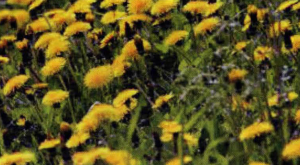 The French were likely the first to cultivate it after they could no longer find enough wild dandelions growing in the countryside around Paris to meet the demands of Parisian markets. In the late 1800s the French grew several special varieties. The Vegetable Garden by M.M. Vilmorin-Andrieux was first published in English in 1885. Based on the family’s experiences, this title explained how to grow dandelions and its cultivation in France.
The French were likely the first to cultivate it after they could no longer find enough wild dandelions growing in the countryside around Paris to meet the demands of Parisian markets. In the late 1800s the French grew several special varieties. The Vegetable Garden by M.M. Vilmorin-Andrieux was first published in English in 1885. Based on the family’s experiences, this title explained how to grow dandelions and its cultivation in France.
Specializing in vegetable seeds, the author’s family owned one of the oldest and largest seed companies in the world at the time. The company is still thriving today. Recently, they opened a vegetable seed subsidiary in Moscow and announced plans to move into the Delhi, India market as well.
In his book, Vilmorin-Andrieux described various varieties of dandelions, particularly ones that he and his company bred. These included Improved Early dandelion, a variety of the Thick Leaved.
Very Early dandelion is also known as the BroadLeaved. It has leaves with few lobes or teeth.
Curled Leaf is a compact form that yields fewer leaves than some others. The Moss-leaved, which is a variety of the Curled Leaf, has very finely cut foliage.
The Thick Leaved or Cabbaging is very productive, and produces large numbers of leaves.
Dandelion’s Value to Bees
Dandelions begin blooming in the Spring when the temperatures are often still on the cool side. These open before the fruit trees flower buds emerge. In warm regions, they can bloom almost year-round. ln colder areas they often have a second blooming period in the Fall, but this crop tends to be smaller than the Spring one.
Considered an excellent bee plant, all of the dandelion species easily attract bees. It remains a mystery as to why the dandelion would bother producing generous quantities of nectar and pollen as the plant isn’t doing this as a survival strategy in order to attract pollinators (it can produce viable seeds without pollination).
The nectar and pollen is readily accessible to bees. Each flower head has about 100-300 individual floral tubes – one for each petal or ray of the flower head. In effect, this offers a veritable feast.
If given a choice, honey bees often select dandelion blossoms over those of apple and pear trees. In some cases, orchardists have reportedly mowed orchards in order to remove this competition from the fruit tree blossoms.
Bees visit the dandelion blossoms often during the day for both nectar and pollen. The latter is especially attractive since the large grains are easy for the bees to carry. The golden yellow or yellow color of the pollen, which is quite plentiful, shows up in the comb and ends up in the honey as well.
Typically, dandelion blossoms open between 6-9 a.m. However, the time on a given day varies according to the latitude and month. They tend to open later in the North. During mid-Summer they open earlier than other times.
The blossoms close some time later in the day before sunset or sooner in case of rain. The fact that they close at night and during stormy, cloudy weather helps to protect them from dewfall and rain.
Both the nectar and pollen play a major role in building up strong colonies. According to USDA, the much valued dandelion is considered a major nectar and pollen plant in the Northeast, North Central, West, and mountainous states, Alaska, and Hawaii. It tends to be an important honey plant in some locations but not in others.
If colonies are strong in the Spring, there is a potential for large honey crops in some locations, although this isn’t necessarily common. In some instances the surplus is small, which likely means the colonies are still too weak to harvest all the dandelion nectar and pollen that is available. In most cases, the honey is fed to bees. A typical surplus would be about 30-40 pounds per hive. However, TBRA reports that worldwide there has been as much as 700 to 800 pounds per acre in some areas.
The honey is often a little strong tasting for some American consumers. It typically has a characteristic, rather sharp, strong flavor that mellows somewhat with age.
The honey can be cloudy. It can vary widely in color from any shade of amber to various shades of yellow. This thick honey crystallizes quickly, developing either fine or coarse, hard grains.
-Connie Krochmal is a writer and beekeeper in Black Mountain, North Carolina.

